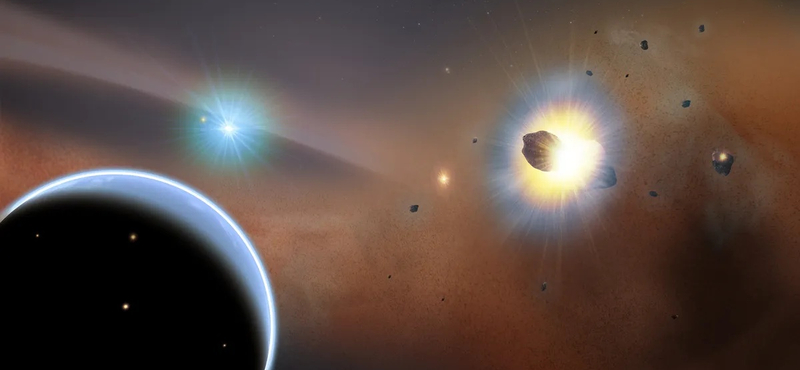[{“available”:true,”c_guid”:”1fbbb0ce-3140-4f72-9fda-492628023e7c”,”c_author”:”hvg.hu”,”category”:”itthon”,”description”:”Hétfőn szavaznak Sulyok Tamás megfosztási eljárásának ügyében.”,”shortLead”:”Hétfőn szavaznak Sulyok Tamás megfosztási eljárásának ügyében.”,”id”:”20240610_a-valasztasokat-kovetoen-ketnapos-ulest-tart-a-parlament”,”image”:”https://img.hvg.hu/Img/ffdb5e3a-e632-4abc-b367-3d9b3bb5573b/1fbbb0ce-3140-4f72-9fda-492628023e7c.jpg”,”index”:0,”item”:”05c487a1-3581-4ae8-8bc7-4aa7f6ed1b6d”,”keywords”:null,”link”:”/itthon/20240610_a-valasztasokat-kovetoen-ketnapos-ulest-tart-a-parlament”,”timestamp”:”2024. június. 10. 05:47″,”title”:”A választásokat követően kétnapos ülést tart a parlament”,”trackingCode”:”RELATED”,”c_isbrandchannel”:false,”c_isbrandcontent”:false,”c_isbrandstory”:false,”c_isbrandcontentorbrandstory”:false,”c_isbranded”:false,”c_ishvg360article”:false,”c_partnername”:null,”c_partnerlogo”:”00000000-0000-0000-0000-000000000000″,”c_partnertag”:null},{“available”:true,”c_guid”:”4fec273f-c5c2-4cb5-9b51-6df588a56b69″,”c_author”:”MTI”,”category”:”itthon”,”description”:”A férfi 2022 őszén fojtotta meg feleségét, úgy, hogy közös gyermekük a másik szobában aludt. Nem sokkal később feladta magát a rendőrségen.”,”shortLead”:”A férfi 2022 őszén fojtotta meg feleségét, úgy, hogy közös gyermekük a másik szobában aludt. Nem sokkal később feladta…”,”id”:”20240611_szeged-gyilkossag-targyalas”,”image”:”https://img.hvg.hu/Img/ffdb5e3a-e632-4abc-b367-3d9b3bb5573b/4fec273f-c5c2-4cb5-9b51-6df588a56b69.jpg”,”index”:0,”item”:”a2cb1cb4-3a27-4b3f-a5b4-13941f742472″,”keywords”:null,”link”:”/itthon/20240611_szeged-gyilkossag-targyalas”,”timestamp”:”2024. június. 11. 11:29″,”title”:”Bíróság előtt a feleségét megfojtó szegedi férfi”,”trackingCode”:”RELATED”,”c_isbrandchannel”:false,”c_isbrandcontent”:false,”c_isbrandstory”:false,”c_isbrandcontentorbrandstory”:false,”c_isbranded”:false,”c_ishvg360article”:false,”c_partnername”:null,”c_partnerlogo”:”00000000-0000-0000-0000-000000000000″,”c_partnertag”:null},{“available”:true,”c_guid”:”5a2d19ad-347d-44c1-bfad-18c7c3158c41″,”c_author”:”hvg.hu”,”category”:”itthon”,”description”:”A választás legizgalmasabb helyszíne volt a Városháza park, ahol ezrek izgultak az eredményért. Hajnali háromkor megjelent a főpolgármester, hogy beszédet mondjon.”,”shortLead”:”A választás legizgalmasabb helyszíne volt a Városháza park, ahol ezrek izgultak az eredményért. Hajnali háromkor…”,”id”:”20240610_karacsony-gergely-fopolgarmester-valasztas-video”,”image”:”https://img.hvg.hu/Img/ffdb5e3a-e632-4abc-b367-3d9b3bb5573b/5a2d19ad-347d-44c1-bfad-18c7c3158c41.jpg”,”index”:0,”item”:”2e187424-ca35-4482-be98-3124bfa562f1″,”keywords”:null,”link”:”/itthon/20240610_karacsony-gergely-fopolgarmester-valasztas-video”,”timestamp”:”2024. június. 10. 08:03″,”title”:”Karácsonyt hajnalig várták a hívei, ezt üzente nekik – videó”,”trackingCode”:”RELATED”,”c_isbrandchannel”:false,”c_isbrandcontent”:false,”c_isbrandstory”:false,”c_isbrandcontentorbrandstory”:false,”c_isbranded”:false,”c_ishvg360article”:false,”c_partnername”:null,”c_partnerlogo”:”00000000-0000-0000-0000-000000000000″,”c_partnertag”:null},{“available”:true,”c_guid”:”e341dcc6-a151-4871-b1ff-1f0045fa8292″,”c_author”:”hvg.hu”,”category”:”itthon”,”description”:”A közvélemény-kutató szerint a Fidesz 11, a Tisza Párt 7-8, a DK 1-2, a Mi Hazánk 1 mandátumot szerez majd meg.”,”shortLead”:”A közvélemény-kutató szerint a Fidesz 11, a Tisza Párt 7-8, a DK 1-2, a Mi Hazánk 1 mandátumot szerez majd meg.”,”id”:”20240609_a-21-kutatokozpont-becslese-szerint-sem-a-momentum-sem-az-mkkp-nem-jut-be-az-ep-beatas-adatbecsles-mandatumok-szama-ep-valasztas”,”image”:”https://img.hvg.hu/Img/ffdb5e3a-e632-4abc-b367-3d9b3bb5573b/e341dcc6-a151-4871-b1ff-1f0045fa8292.jpg”,”index”:0,”item”:”d937e848-08cd-4acc-8534-66eb9c7e91a2″,”keywords”:null,”link”:”/itthon/20240609_a-21-kutatokozpont-becslese-szerint-sem-a-momentum-sem-az-mkkp-nem-jut-be-az-ep-beatas-adatbecsles-mandatumok-szama-ep-valasztas”,”timestamp”:”2024. június. 09. 19:26″,”title”:”A 21 Kutatóközpont becslése szerint sem a Momentum, sem az MKKP nem jut be az EP-be”,”trackingCode”:”RELATED”,”c_isbrandchannel”:false,”c_isbrandcontent”:false,”c_isbrandstory”:false,”c_isbrandcontentorbrandstory”:false,”c_isbranded”:false,”c_ishvg360article”:false,”c_partnername”:null,”c_partnerlogo”:”00000000-0000-0000-0000-000000000000″,”c_partnertag”:null},{“available”:true,”c_guid”:”04ac24b3-b27b-43cb-affd-e4b61421a17e”,”c_author”:”MTI”,”category”:”itthon”,”description”:”Vasárnap késő délután ismét felhőszakadás és zivatar várható az ország északnyugati részein.”,”shortLead”:”Vasárnap késő délután ismét felhőszakadás és zivatar várható az ország északnyugati részein.”,”id”:”20240609_szombathely-eso-arviz”,”image”:”https://img.hvg.hu/Img/ffdb5e3a-e632-4abc-b367-3d9b3bb5573b/04ac24b3-b27b-43cb-affd-e4b61421a17e.jpg”,”index”:0,”item”:”93911748-b46e-456e-9f66-871359a18df4″,”keywords”:null,”link”:”/itthon/20240609_szombathely-eso-arviz”,”timestamp”:”2024. június. 09. 15:41″,”title”:”Szombathelyen udvarokat és utcákat öntött el az árvíz”,”trackingCode”:”RELATED”,”c_isbrandchannel”:false,”c_isbrandcontent”:false,”c_isbrandstory”:false,”c_isbrandcontentorbrandstory”:false,”c_isbranded”:false,”c_ishvg360article”:false,”c_partnername”:null,”c_partnerlogo”:”00000000-0000-0000-0000-000000000000″,”c_partnertag”:null},{“available”:true,”c_guid”:”b192135c-3f06-4e46-8a8f-8143f2cb005d”,”c_author”:”hvg.hu”,”category”:”vilag”,”description”:”A rendőrök friss császármetszésre utaló heget találtak a nő holttestén, attól tartanak, hogy magára hagyhatta újszülött gyermekét.”,”shortLead”:”A rendőrök friss császármetszésre utaló heget találtak a nő holttestén, attól tartanak, hogy magára hagyhatta újszülött…”,”id”:”20240610_peine-sanyi-tetovalas-holttest-nemetorszag”,”image”:”https://img.hvg.hu/Img/ffdb5e3a-e632-4abc-b367-3d9b3bb5573b/b192135c-3f06-4e46-8a8f-8143f2cb005d.jpg”,”index”:0,”item”:”38bcc3e3-d42a-4993-9e63-468103a759a5″,”keywords”:null,”link”:”/vilag/20240610_peine-sanyi-tetovalas-holttest-nemetorszag”,”timestamp”:”2024. június. 10. 15:09″,”title”:”Konténerből került elő egy nő holtteste Németországban, „SANYI” szövegű tetoválása van”,”trackingCode”:”RELATED”,”c_isbrandchannel”:false,”c_isbrandcontent”:false,”c_isbrandstory”:false,”c_isbrandcontentorbrandstory”:false,”c_isbranded”:false,”c_ishvg360article”:false,”c_partnername”:null,”c_partnerlogo”:”00000000-0000-0000-0000-000000000000″,”c_partnertag”:null},{“available”:true,”c_guid”:”a65b91e2-01e6-42c3-8cda-08e32ee883c1″,”c_author”:”hvg.hu”,”category”:”vilag”,”description”:”A dél-koreai hadsereg szerint csak véletlenül lépték át a határt az északi katonák, mivel az érintett szakaszon nem láthatók jól az azt jelző feliratok.”,”shortLead”:”A dél-koreai hadsereg szerint csak véletlenül lépték át a határt az északi katonák, mivel az érintett szakaszon nem…”,”id”:”20240611_eszak-korea-del-korea-figyelmezteto-loves”,”image”:”https://img.hvg.hu/Img/ffdb5e3a-e632-4abc-b367-3d9b3bb5573b/a65b91e2-01e6-42c3-8cda-08e32ee883c1.jpg”,”index”:0,”item”:”38b1eae6-c019-4309-a840-f2cdff87f576″,”keywords”:null,”link”:”/vilag/20240611_eszak-korea-del-korea-figyelmezteto-loves”,”timestamp”:”2024. június. 11. 07:50″,”title”:”Észak-koreai katonák tévedtek délre, figyelmeztető lövések fogadták őket”,”trackingCode”:”RELATED”,”c_isbrandchannel”:false,”c_isbrandcontent”:false,”c_isbrandstory”:false,”c_isbrandcontentorbrandstory”:false,”c_isbranded”:false,”c_ishvg360article”:false,”c_partnername”:null,”c_partnerlogo”:”00000000-0000-0000-0000-000000000000″,”c_partnertag”:null},{“available”:true,”c_guid”:”d492a8f1-b9d7-439c-b689-b20dfe4a40f8″,”c_author”:”hvg.hu”,”category”:”cegauto”,”description”:”A Passat sofőrje befejezte, amit elkezdett, sőt még egyet előzött.”,”shortLead”:”A Passat sofőrje befejezte, amit elkezdett, sőt még egyet előzött.”,”id”:”20240610_elozesbe-kezdett-autos-szembol-erkezo-mentett-autos-video-balesetveszelyes-sofor”,”image”:”https://img.hvg.hu/Img/ffdb5e3a-e632-4abc-b367-3d9b3bb5573b/d492a8f1-b9d7-439c-b689-b20dfe4a40f8.jpg”,”index”:0,”item”:”24872654-0760-43fa-be35-b3ff7173d9d1″,”keywords”:null,”link”:”/cegauto/20240610_elozesbe-kezdett-autos-szembol-erkezo-mentett-autos-video-balesetveszelyes-sofor”,”timestamp”:”2024. június. 10. 12:21″,”title”:”Érthetetlen előzésbe kezdett egy autós, hatalmasat kellett mentenie a szemből érkezőnek – videó”,”trackingCode”:”RELATED”,”c_isbrandchannel”:false,”c_isbrandcontent”:false,”c_isbrandstory”:false,”c_isbrandcontentorbrandstory”:false,”c_isbranded”:false,”c_ishvg360article”:false,”c_partnername”:null,”c_partnerlogo”:”00000000-0000-0000-0000-000000000000″,”c_partnertag”:null}]

We recommend it from the first page

Andrea Horn
Sports
How true is it that a new car can only be sold at a significant discount?

It's really worth it for those who travel frequently.
A recount of votes was needed, Davide Vitese told hvg.hu, who was only 324 votes behind Gergely Karacsony.

We have collected the most important information for those traveling to the European Championship, as well as for those who prefer to stay at home, but with others…
the next




















![Because of the relative Remaster, you get a lot of fun playing! [VIDEO] Because of the relative Remaster, you get a lot of fun playing! [VIDEO]](https://thegeek.hu/wp-content/uploads/sites/2/2023/11/thegeek-post-trauma-2023.jpg)























